 Since the fall of 2020, students in Assistant Professor of Chemistry Tim Reichart’s Advanced Laboratory class have been seeking out a potential new target for drug development that is promising in combating a range of coronavirus infections.
Since the fall of 2020, students in Assistant Professor of Chemistry Tim Reichart’s Advanced Laboratory class have been seeking out a potential new target for drug development that is promising in combating a range of coronavirus infections.
COVID-19. SARS-CoV-2. Novel coronavirus. This virus by any other name would still…probably occupy as much of the news cycle and our collective brain space as it has the past 483 days and counting. While the U.S. is seemingly closer to getting the pandemic under control with the roll-out of the vaccine program and with daily new cases steadily decreasing, the fight to effectively treat the infection is nowhere near won.
But before there were COVID-19 vaccines, there was Assistant Professor of Chemistry Tim Reichart’s Advanced Laboratory—CHEM 351. While the rest of the world was focused on the spike protein, which is the target of the mRNA vaccines currently on the market, Dr. Reichart was hunting down a more elusive, harder-to-access part of the virus: the transmembrane domain.
You probably want to know what a transmembrane domain is, right? Better let the experts handle that one: “The SARS-CoV-2 virus has a lipid membrane bilayer and several integral proteins that are necessary for infection including the spike protein, membrane protein, and envelope protein, which my students worked with. Each of these proteins has a transmembrane domain, which is the part of the protein that sits in the membrane bilayer and makes sure it doesn’t leave the virus. It’s like a foundation, setting the protein in place,” explains Reichart. And these proteins are critical to making SARS-CoV-2 virus particles infectious.
In the fall of 2020, five students in Dr. Reichart’s Advanced Lab began synthesizing the various proteins found in the SARS-CoV-2 virus in an effort to determine each protein’s oligomerization state, which is potentially a target for drug development. “For example, if a protein has to be a trimer to function—like the spike protein—disruption of that trimer, either at the transmembrane domain or somewhere else, would prevent that protein from being functional and would therefore prevent the virus from being infectious,” Reichart explains.
If you’re confused, don’t worry. This isn’t your typical undergraduate chemistry subject matter. “I would give this project to a graduate-level student at an Ivy League institution,” Dr. Reichart admits. “Transmembrane peptides are really difficult to work with, which explains why the first semester was very frustrating for the students, but it’s a real-world problem.” Despite the advanced nature of the project, several students successfully synthesized their proteins in the fall semester, and more did so in the second part of the course, Advanced Laboratory—CHEM 352—this spring.
Dr. Reichart’s interest in the transmembrane domain layer was not purely academic, but rather utilitarian as well. In the last 20 years alone there have been three coronavirus outbreaks that reached epidemic levels: SARS, MERS, and the ongoing SARS-CoV-2. While drug therapy targeting the transmembrane domain of SARS-CoV-2 is difficult to do, it is also incredibly promising in theory in combating a range of coronavirus infections.
“The spike proteins of SARS, MERS, and SARS-CoV-2 are all very different,” Reichart explains. “But the transmembrane domain would be very, very similar between those three. If we can provide proof of concept by synthesizing a molecule that disrupts any one of the proteins on SARS-CoV-2, we could potentially develop a drug that would be widely applicable against coronaviruses as a whole.”
And with several hundred coronaviruses in bats alone that have the potential to jump species, this hypothetical drug therapy may be the key to preventing future outbreaks, which Dr. Reichart believes are all but inevitable given the frequency with which coronaviruses have jumped from animals to humans and resulted in pandemics in recent history.
“Also, it is possible that some of the SARS-CoV-2 mutants currently circulating will evade the vaccine,” Reichart continues. “Which we know is possible as the vaccines are not as effective against some of the mutants. But all of the mutants for SARS-CoV-2 that are circulating have exactly the same transmembrane domain, so a drug would be effective against all of those variants as well.”
While the possibility of this drug is still far off, Dr. Reichart’s research is important in and of itself, and it’s what drives him. “I got involved in research my first semester at the University of Virginia, and that’s what really made me want to be a chemist and a professor,” Reichart says. “I like training students to do research. At a primarily undergraduate institution, I have the opportunity to give students their first exposure to cutting-edge research. I always want to have students doing research projects solving real-life problems.”
Along with the invaluable experience of doing research on such a pressing subject in real-time, some of Dr. Reichart’s Advanced Lab students are also getting incomparable experience presenting their findings at professional conferences. Alexander Washington ’21 and Donovan Quinn ’21 each presented a poster to the Virginia Section of the American Chemical Society. Alexander also presented his poster at the annual meeting of the American Society for Biochemistry and Molecular Biology. Presenting at professional conferences as an undergrad is “pretty rare” according to Dr. Reichart, and these experiences greatly help students who are interested in research either in graduate school or as a career field.
Dr. Reichart will continue facilitating real-life research this summer as five more students pick up the baton in the search for an effective treatment method of SARS-CoV-2. With any luck, the work Dr. Reichart and his students do on the Hill will not only turn this pandemic into a distant memory but also prevent future widespread outbreaks.


